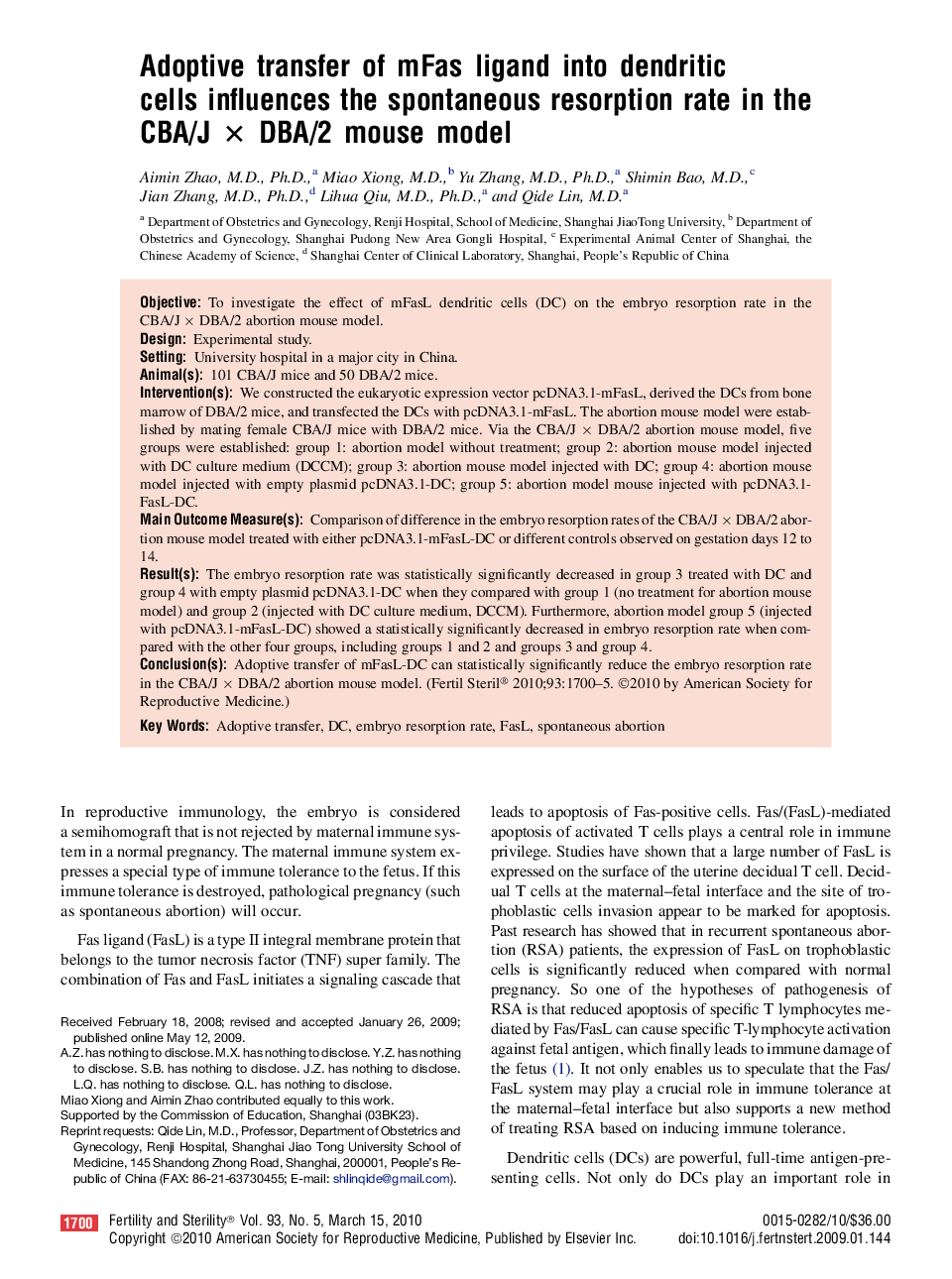| Article ID | Journal | Published Year | Pages | File Type |
|---|---|---|---|---|
| 3938252 | Fertility and Sterility | 2010 | 6 Pages |
ObjectiveTo investigate the effect of mFasL dendritic cells (DC) on the embryo resorption rate in the CBA/J × DBA/2 abortion mouse model.DesignExperimental study.SettingUniversity hospital in a major city in China.Animal(s)101 CBA/J mice and 50 DBA/2 mice.Intervention(s)We constructed the eukaryotic expression vector pcDNA3.1-mFasL, derived the DCs from bone marrow of DBA/2 mice, and transfected the DCs with pcDNA3.1-mFasL. The abortion mouse model were established by mating female CBA/J mice with DBA/2 mice. Via the CBA/J × DBA/2 abortion mouse model, five groups were established: group 1: abortion model without treatment; group 2: abortion mouse model injected with DC culture medium (DCCM); group 3: abortion mouse model injected with DC; group 4: abortion mouse model injected with empty plasmid pcDNA3.1-DC; group 5: abortion model mouse injected with pcDNA3.1-FasL-DC.Main Outcome Measure(s)Comparison of difference in the embryo resorption rates of the CBA/J × DBA/2 abortion mouse model treated with either pcDNA3.1-mFasL-DC or different controls observed on gestation days 12 to 14.Result(s)The embryo resorption rate was statistically significantly decreased in group 3 treated with DC and group 4 with empty plasmid pcDNA3.1-DC when they compared with group 1 (no treatment for abortion mouse model) and group 2 (injected with DC culture medium, DCCM). Furthermore, abortion model group 5 (injected with pcDNA3.1-mFasL-DC) showed a statistically significantly decreased in embryo resorption rate when compared with the other four groups, including groups 1 and 2 and groups 3 and group 4.Conclusion(s)Adoptive transfer of mFasL-DC can statistically significantly reduce the embryo resorption rate in the CBA/J × DBA/2 abortion mouse model.
